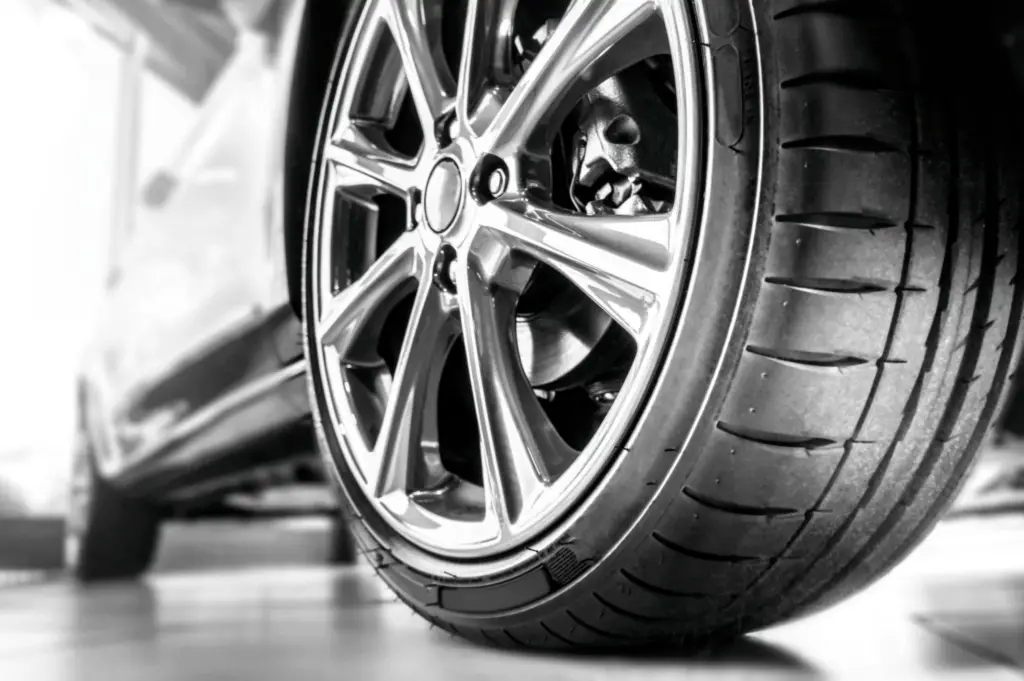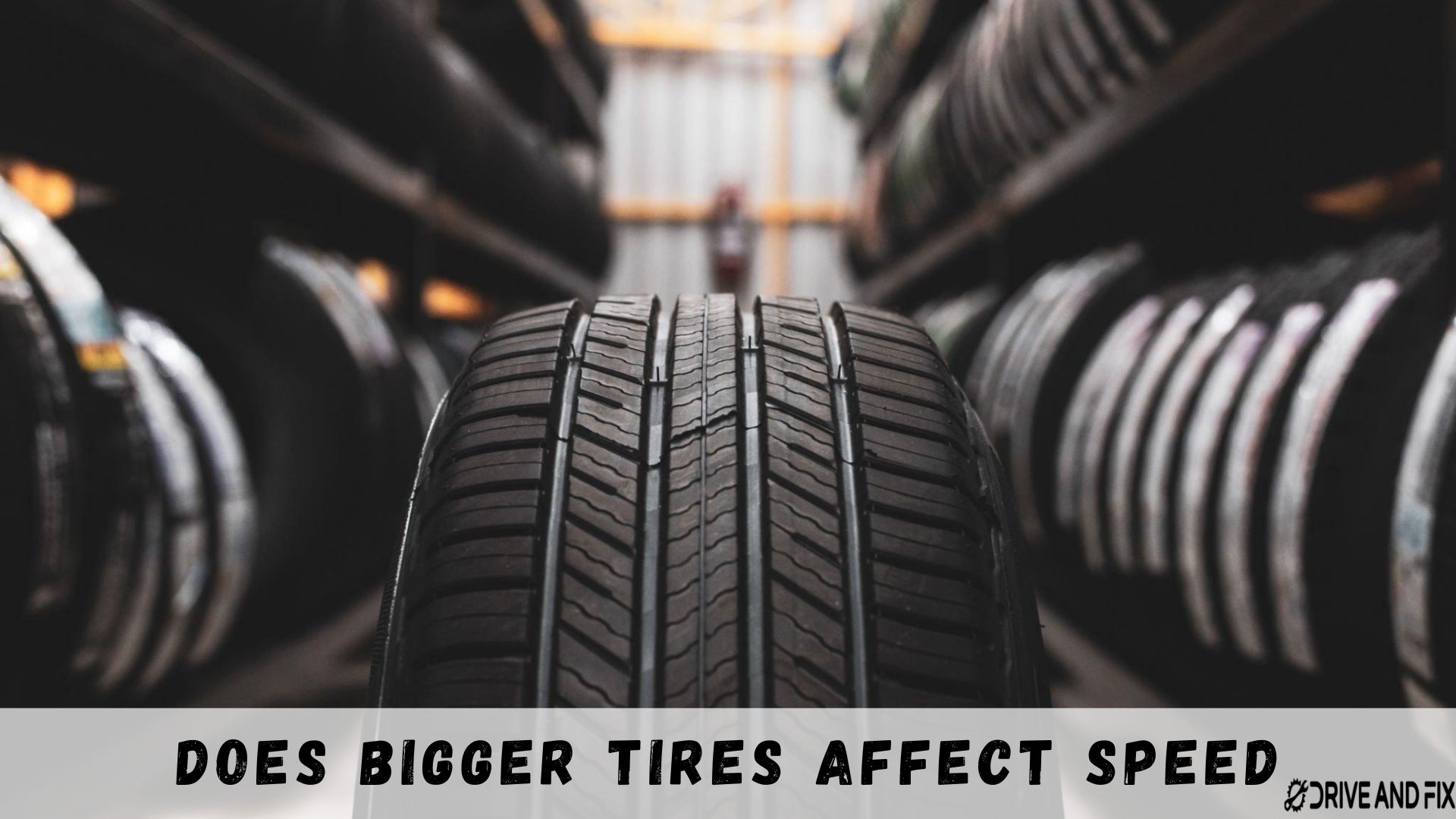Have you ever wondered if bigger tires affect speed? Tire size plays a crucial role in the overall performance of a vehicle, and it’s natural to question whether larger tires can impact speed. In this article, we will explore the relationship between tire size and speed, along with the various factors that come into play. By the end, you’ll have a better understanding of how bigger tires can influence your vehicle’s speed.
When it comes to modifying vehicles, changing tire size is a popular option for many enthusiasts. However, it’s essential to comprehend the implications of such modifications on speed and other aspects of driving. Let’s delve deeper into this subject and shed light on the various factors that contribute to the influence of tire size on speed.
Understanding Tire Size and Speed Rating
Before we discuss the impact of bigger tires on speed, it’s crucial to grasp the fundamentals of tire size and speed rating. Tire size is typically denoted by a series of numbers and letters, such as 205/55R16. In tire sizing, the three numbers used represent different aspects of the tire. The first number signifies the tire width in millimeters, the second number indicates the aspect ratio, which represents the height of the sidewall as a percentage of the tire’s width, and the last number represents the wheel diameter in inches.
Speed rating, on the other hand, represents the maximum speed at which a tire can safely operate. It is usually indicated by a letter, such as H, V, or Z, with each letter corresponding to a specific maximum speed threshold.
The Relationship Between Tire Size and Speed

When you install bigger tires on your vehicle, it can potentially impact the speed at which you can travel. Larger tires have a greater circumference, meaning they cover more ground in a single revolution compared to smaller tires. Consequently, if you maintain the same engine RPM (revolutions per minute), bigger tires will result in a higher speed reading on the speedometer.
- Factors Impacting Speed with Bigger Tires
While bigger tires can lead to a higher speed reading, several factors come into play that can affect the actual speed of your vehicle. It’s important to consider these factors to have a comprehensive understanding of the overall impact.
- Effects on Acceleration and Braking
One of the significant considerations when it comes to bigger tires is their impact on acceleration and braking. Larger tires increase the rotational inertia, which can result in slower acceleration due to the additional weight. Similarly, braking performance might be affected as the increased tire size requires more effort to slow down the vehicle.
- Handling and Cornering with Bigger Tires
Bigger tires can influence the handling and cornering capabilities of your vehicle. While larger tires can provide enhanced traction and stability, they may also affect the vehicle’s responsiveness to steering inputs. The wider footprint of bigger tires can lead to improved grip during cornering, but it can also make the steering feel heavier and reduce maneuverability in tight turns.
- Fuel Efficiency Considerations
Another aspect to consider when it comes to bigger tires is their impact on fuel efficiency. Generally, larger tires create more rolling resistance, requiring more energy to move the vehicle. This increased resistance can result in reduced fuel efficiency and potentially higher fuel consumption. It’s essential to keep in mind that changes in tire size can affect the vehicle’s overall aerodynamics and drivetrain efficiency, influencing fuel economy.
Advantages and Disadvantages of Bigger Tires

Now that we’ve discussed the various effects of bigger tires on speed and other factors, let’s consider the advantages and disadvantages of opting for larger tire sizes.
- Improved Off-Road Performance
For off-road enthusiasts, bigger tires can offer significant advantages. The increased ground clearance provided by larger tires allows for better maneuverability over rough terrains and obstacles. Additionally, the larger contact patch can enhance traction on uneven surfaces, improving off-road performance.
- Enhanced Traction and Stability
Bigger tires have a larger contact area with the road, which can provide improved traction in certain conditions. This increased traction can be particularly beneficial in wet or snowy environments, where better grip is crucial for safe driving. Moreover, larger tires can contribute to a more stable driving experience, especially at higher speeds.
- Reduced Fuel Efficiency
As mentioned earlier, one of the disadvantages of bigger tires is their potential impact on fuel efficiency. The increased rolling resistance requires more energy to move the vehicle, resulting in higher fuel consumption. If fuel efficiency is a top priority for you, it’s important to consider the trade-off between larger tire sizes and fuel economy.
- Increased Wear and Tear
Bigger tires can subject certain vehicle components to additional stress. The larger size and weight can put strain on the suspension, brakes, and drivetrain, potentially leading to increased wear and tear. Regular maintenance and proper alignment become even more crucial when using larger tire sizes to mitigate any potential issues.
Tire Size and Speedometer Accuracy
It’s worth noting that changing tire size can also affect the accuracy of your vehicle’s speedometer reading. When you install larger tires, the speedometer may indicate a lower speed than the actual velocity due to the increased tire circumference. This discrepancy can have legal implications and may require recalibration or the use of a speedometer correction device to ensure accurate speed readings.
How Much Do 33-Inch Tires Affect the Speedometer?

When it comes to changing tire sizes, one common question that arises is how much 33-inch tires affect the speedometer. Upgrading to larger tires, such as 33-inch tires, can have an impact on your vehicle’s speedometer reading.
The speedometer is calibrated to provide accurate readings based on the original tire size specified by the manufacturer. However, when you switch to larger tires, the overall circumference of the tire increases. This means that for each revolution of the wheel, the vehicle covers more ground compared to the original tire size.
Due to this increased circumference, the speedometer will typically display a lower speed than the actual velocity of the vehicle when larger 33-inch tires are installed. The discrepancy in speedometer readings becomes more pronounced as the tire size increases.
The exact difference in speedometer readings will depend on the specific tire size, as well as the original tire size and the vehicle’s speedometer calibration. However, as a general guideline, when switching to 33-inch tires, the speedometer reading can be expected to be slightly lower than the actual speed.
To compensate for this discrepancy and ensure accurate speed readings, recalibration of the speedometer may be necessary. This can be done by reprogramming the vehicle’s electronic control unit (ECU) or using a speedometer correction device. These methods adjust the speedometer’s calibration to account for the larger tire size and provide accurate speed readings.
It’s important to note that accurate speed readings are not only essential for obeying traffic laws but also for maintaining optimal vehicle performance and safety. Therefore, if you decide to install 33-inch tires or any other tire size that deviates significantly from the original specifications, it is recommended to consult with professionals or authorized dealers to ensure proper recalibration of the speedometer.
Switching to 33-inch tires can affect the speedometer reading, typically resulting in a lower speed displayed compared to the actual velocity. Recalibration of the speedometer may be necessary to ensure accurate speed readings and maintain optimal vehicle performance.
Choosing the Right Tire Size for Your Needs

When considering tire size modifications, it’s important to choose the right size that suits your specific needs and preferences. Several factors should be taken into account before making a decision.
Factors to Consider
First and foremost, consider your driving habits and the conditions in which you most frequently drive. Are you primarily driving on highways, city streets, or off-road terrains? Assessing your driving requirements will help determine the appropriate tire size for optimal performance.
Additionally, consult the manufacturer’s recommendations and guidelines for your vehicle model. They provide valuable insights into the acceptable tire sizes and speed ratings that are compatible with your vehicle’s specifications.
Consulting with Professionals
To ensure the best possible outcome when considering changes to tire size, it is highly recommended to consult with automotive professionals or tire specialists. They can provide expert guidance based on your specific vehicle, driving style, and performance goals. Their expertise will help you make informed decisions and avoid potential drawbacks.
Frequently Asked Questions

Will installing bigger tires make my car faster?
Installing bigger tires can potentially increase speedometer readings, but it doesn’t necessarily make the car faster in terms of acceleration or top speed.
Do bigger tires affect fuel efficiency?
Yes, bigger tires can lead to reduced fuel efficiency due to increased rolling resistance, requiring more energy to move the vehicle.
Can I install bigger tires on any vehicle?
While it’s possible to install bigger tires on many vehicles, it’s important to consider the compatibility with your vehicle’s specifications and consult professionals for guidance.
Do bigger tires affect my vehicle’s suspension?
Bigger tires can put additional stress on the suspension, potentially increasing wear and tear. Proper maintenance and alignment are crucial to mitigate any adverse effects.
Can changing tire size affect my vehicle’s warranty?
Modifying tire size can potentially void certain aspects of your vehicle’s warranty. It’s advisable to consult with your vehicle manufacturer or authorized dealers for specific warranty information.
Conclusion
The impact of bigger tires on speed is not straightforward. While larger tires can result in higher speedometer readings, their effects extend beyond speed alone. Factors such as acceleration, braking, handling, fuel efficiency, and vehicle wear and tear must be considered. It’s important to make informed decisions based on individual needs and consult professionals for guidance. Prioritizing safety and understanding the trade-offs associated with bigger tires will help optimize your driving experience.
If you’re interested in knowing “Does Freon Evaporate Over Time in A Car?” then check here: Does Freon Evaporate Over Time in A Car? Find Out Now


